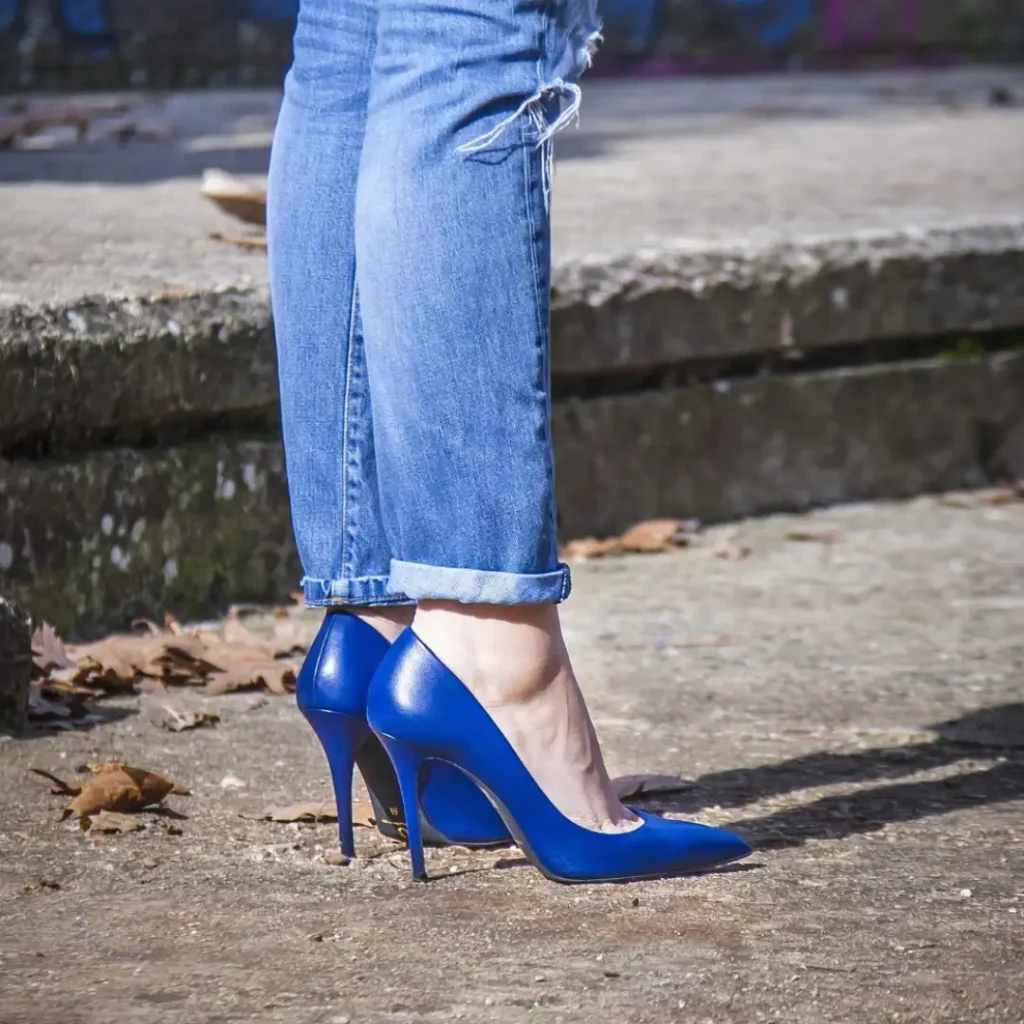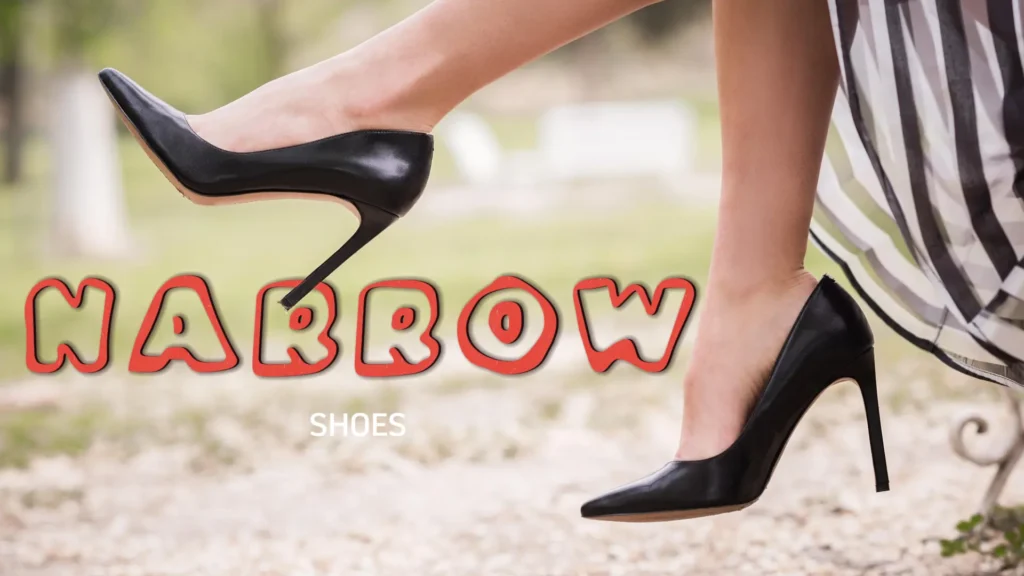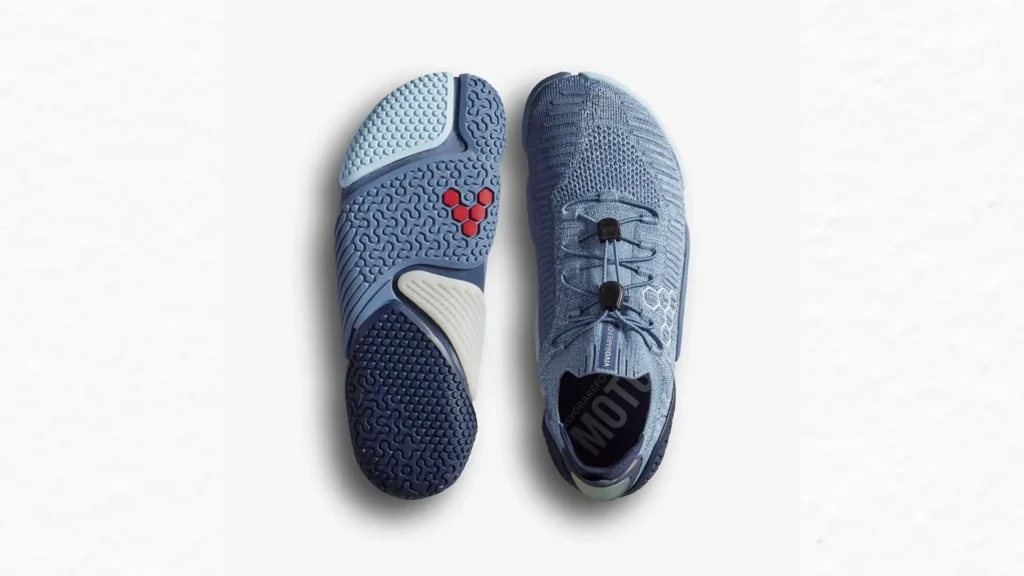Finding shoes for narrow feet is challenging. Narrow feet people struggle to find footwear that fits comfortably without slipping. However, with the right approach, you can find shoes that not only fit well but also look stylish.
How to Measure Your Foot Size
Analyze your foot shape before shopping footwear. Narrow feet are characterized by a slimmer width compared to standard shoe sizes. You will feel extra space around the sides of your feet when wearing regular-width shoes.
This leads to issues such as heel slippage, blisters, and discomfort. Knowing whether your feet are narrow, average, or wide will help you make informed decisions when selecting footwear.
To determine your foot width, start by tracing your foot on a piece of paper while standing. Make sure your weight is evenly distributed across both feet to get an accurate outline.
Use a ruler or measuring tape to measure the widest part of your foot.
Compare your foot width to sizing charts to identify whether you fall into the narrow, medium, or wide category.
For example, women with a foot width of less than 3.5 inches (8.9 cm) or men with a width of less than 4 inches (10.2 cm) typically have narrow feet.
Understanding your foot shape helps you find the right width of your foot. Correct foot size helps to reduce the risk of long-term foot problems.
Look for Narrow Shoes
Narrow shoes are crafted with a slimmer last (the mold used to shape the shoe). They provide a snugger fit around the heel and midfoot. This reduces the likelihood of slipping.
When shopping online, use filters to narrow down your search by specifying narrow or slim widths. Many e-commerce platforms allow you to refine results based on size and width.
If shopping in-store, ask store associates about their selection of narrow-fit shoes. Some stores may even have specialized fittings to help you find the perfect pair.
Try on multiple pairs from different brands. Sizing and fit vary significantly brand by brand.
Investing in shoes designed for narrow feet ensures better comfort and minimizes the need for adjustments.
Prioritize Adjustable Features
Shoes with adjustable features allow you to customize the fit according to your foot size. This is particularly important for people with narrow feet. Here are some examples of adjustable features to look for.
Laces give you control over how tightly the shoe hugs your foot. You can tighten the laces around the midfoot and loosen them slightly at the toe box to achieve a balanced fit. Lace-up styles work well for narrow feet. Strappy sandals equipped with buckles or Velcro straps let you adjust the tension around your foot.
Avoid slip-on styles unless they are specifically designed for narrow feet. Slip-ons, loafers, and mules tend to lack structure. If you prefer slip-ons, opt for those with elastic panels tailored to narrower foot shapes.
Choose the Right Material
The material of the shoe plays a significant role in achieving a comfortable fit. Opt for soft, flexible materials that mold to the shape of your narrow foot over time.
Leather is highly recommended for its breathability and ability to stretch slightly with wear. Full-grain and nubuck leathers are durable and provide a luxurious feel. Suede offers a cozy texture that conforms to your foot without feeling restrictive.
Knit uppers are lightweight and adaptable. These materials are ideal for narrow feet. They hug the contours of your foot without creating pressure.
Avoid stiff fabrics like rigid plastics and faux leather. They exacerbate discomfort and make the shoe feel tighter than necessary. Stiff materials also cause rubbing.
Pay attention to the lining inside the shoe. Padded linings improve cushioning and reduce friction. This ensures a smoother walking experience. Memory foam insoles are another excellent addition. They conform to the unique shape of your foot for added support.
Pay Attention to Arch Support
Narrow feet come with high arches. It needs proper support to maintain balance and prevent strain. High arches can lead to uneven weight distribution. This can create excessive pressure on the ball and heel of the foot.
This imbalance may result in discomfort, pain, or even injuries such as plantar fasciitis if not addressed properly.
When selecting shoes for narrow feet, prioritize those with built-in arch support. Many brands design shoes with contoured insoles that cradle the arch and provide stability. Look for features like:
- Cushioned Midsoles: These absorb shock and reduce stress on your joints.
- Firm Arch Inserts: These offer structural support to keep your foot aligned.
- Removable Insoles: If the shoe’s default insole doesn’t provide adequate support, you can replace it with a custom orthotic insert tailored to your foot shape.
Custom orthotics are particularly beneficial for individuals with narrow feet and high arches. These inserts are designed based on your unique foot profile and can address overpronation and supination. Orthotics also help distribute your weight evenly across your foot.
Try Smaller Widths

If a brand doesn’t explicitly offer narrow-width shoes, trying a smaller shoe size might do the trick. A smaller size help eliminate excess room in the toe box and midfoot areas. This provides a snugger fit for narrow feet.
For example, if you typically wear a size 8 but find that the shoe feels too loose, opting for a size 7.5 could make a noticeable difference.
However, be cautious when sizing down. Ensure that your toes still have enough space to move freely.
To test this, press down gently on the front of the shoe while standing. There should be about a thumb’s width (approximately ½ inch) of space between your longest toe and the end of the shoe. Wiggle your toes to confirm they aren’t restricted.
European-sized shoes sometimes run narrower than American sizes. They are a great alternative for slim feet.
Experimenting with different sizes and widths is key to finding the perfect fit. Don’t hesitate to try multiple shoes until you find a pair that feels just right.
Always try on shoes before purchasing them. Shoe sizes and fits can vary significantly between models and manufacturers due to differences in design, materials, and construction methods. What works for one style may not necessarily work for another.
Here’s what to check during fittings: take a few steps to assess the shoe’s comfort. Pay attention to how the shoe feels as you shift your weight from heel to toe.
The back of the shoe should grip your heel firmly without slipping. If your heel moves excessively, the shoe may cause instability. Check for any areas where the shoe feels tight. Focus on the sides, toes, and seams, as these are common trouble spots for narrow feet.
Remember to shop later in the day when your feet are slightly swollen. This will give you a better idea of how the shoes will feel after prolonged use. Feet tend to expand throughout the day. Buying shoes in the morning could result in a fit that feels too tight by evening.
If possible, bring along the type of socks you plan to wear with the shoes. Thick socks can affect the fit. Testing the shoes with the correct sock thickness ensures accuracy.
By thoroughly testing each pair, you’ll avoid the frustration of returning ill-fitting shoes.
Consider Specialty Stores
If you’re having trouble finding the right shoes for your narrow feet, consider visiting specialty stores that cater to unique foot shapes. These retailers carry a wider range of sizes and widths, including hard-to-find narrow shoes.
Some specialty stores offer personalized fitting services. They use advanced tools like 3D foot scanners to analyze your foot shape and recommend the best-fitting shoes.
Alternatively, you can look for online retailers specializing in narrow-width footwear. Zappos, Nordstrom, and Naturalizer filter products by width. So this is easier to find shoes to match your specifications.
Don’t Sacrifice Style for Comfort
Just because you have narrow feet doesn’t mean you have to compromise on style. Modern shoes now are both aesthetic and functional. They come with trendy designs to cater to unique foot shapes. From sleek loafers to elegant heels and sporty sneakers, there are plenty of stylish footwear available for narrow feet.
To strike the perfect balance between fashion and function, opt for classic silhouettes like pointed-toe flats, ankle boots, and minimalist sneakers that pair well with various outfits.
Shoes in bold hues and luxurious materials elevate your look while remaining comfortable.
Keep an eye on seasonal collections from brands known for accommodating narrow feet. Designers are increasingly incorporating inclusive sizing into their lines.
Take your time to explore different styles until you find something that suits your taste and needs. With a bit of patience and research, you’ll discover shoes that make a statement.
Invest in Quality Over Quantity
While it might be tempting to purchase cheaper shoes, investing in high-quality footwear is worth every penny. Well-made shoes last longer. Look for reputable brands known for crafting durable, narrow-fit shoes.
High-quality shoes are constructed with premium materials and meticulous craftsmanship. Look for narrow shoes with features like reinforced stitching. Strong seams prevent the shoe from falling apart prematurely. Durable outsoles protect your feet from impact. Moisture-wicking fabrics keep your feet cool and dry.
Although quality shoes come with a higher upfront cost, their longevity and performance justify the investment. Plus, owning fewer pairs of well-made shoes simplifies your wardrobe and reduces clutter.
Ultimately, prioritizing quality over quantity ensures that your footwear remains a reliable companion through all of life’s adventures.
Choosing shoes for narrow feet requires patience and attention to detail. But the effort pays off in the form of enhanced comfort and confidence. Understand your foot. You can build a wardrobe of shoes that fit perfectly and reflect your personal style.




